|
In the simple terms,
Tax is a predetermined charge mostly in form of cash or kind imposed by
the authority on its subjects. The story of taxes goes hand in hand with
the story of the civilization. Since the civilization, taxes were
collected for social welfare and security.
 . .
In the ancient period, the taxes were mostly applied on Agriculture and
related activities, Industrial goods, Business activities etc. and
collected throughout the dynasty.
|
|
EGYPT (3000 BC-2800BC) : |
 |
Egyptian peasants
seized for non-payment of taxes(Pyramid Age) Wells, H. G.(1920).
The Outline of History. Garden City, New York: Garden City
Publishing Co., Inc. taken from
http://en.wikipedia.org/wiki/Tax#Excises |
|
|
The earliest record
found in the history of taxes seems to be from Egypt. The Pharaoh
used to conduct a biennial tour of their Kingdom and collect taxes
from the people.
As per Genesis (Chapter 47, Verse 24 in new
version) the taxes were 1/5th of the crop produced. Joseph in Hebrew
Bible describes the method of dividing the farm produce to give the
portion to Pharaoh.
The people who did not complied were arrested
and punished.
|
|
|
MAURYA DYNASTY (305BC-230BC) : |
|
In the Indian
subcontinent, we come across a very comprehensive and detailed
description of tax system, its rate and its administration in the
writings of Arya Chanakya. (around 320BC) as prevalent in the Maurya
Dynasty. On the theory of how a state and king formed in a previously
uncontrolled and unregulated groups Arya Chanakya (around 320 BC) in his
‘Kautiliya Arthashastra’ has written, |
 |
When the society was
distraught due to anarchy, people came together and decided unanimously
to expel the wrong doers.
But the decision could not be uphold for long,
therefore people made Vaivasvat Manu the king to look after the well
being of the
subjects and agreed to give him 1/6th of the produce from
field and 1/10th of the profit from trade. |
|
The book is almost like a ready-reckoner for tax administration in a
Kingdom. Particularly on the subject of Taxation it gives instructions
in a manual like precision. For example, it describes Customs duty on
the goods imported from a foreign country to be levied at the rate of
1/15th of the value. Wherever, value is not determinable, it is to be
estimated from the cost of labour, time and efforts required for the
goods based on the guidance from a expert in the subject.
Fine or Coarse Silk fabric, Cotton fabric, Spices, Metals, Colours,
Sandal, Chemicals, Cloths, Liquor, Ivory, Animal skin, coarse and fine
fabric, mats, wool and silk material attracted Customs duty of 1/10th or
1/25th value of the material. Fabric, four legged animals, two legged
creatures, cotton yarn, medicines, scents, wood, grain, oil ghee, sugar,
salt, Liquor etc. attracted 1/10th or 1/25th per cent extra duty. There
are also references to services, which were taxable. Curiously, we learn
that there was a ban on sale of the goods where they were produced. The
person who bought flowers or fruits from their fields was fined 54
Paanas. One who bought metal from its quarry was fined 600 Paanas. Fine
was in proportion to the crime.
The book elaborates the place of the check-post, procedure of auction
and penalties for mis-declaration, under-valuation. It suggests King to
send his intelligence officers to check whether duty officers are doing
their duty correctly and vigilantly. If any officer is misinforming then
he should be penalized with 8 times duty amount. It also suggests
sending some officers in by-lanes and lee-lanes of the town to check if
any merchant is escaping the check-post. Just as goods and services that
were taxed, there were also exemptions in place. The good brought for
marriage purpose, or the goods brought by a married woman from her
father’s house to her husbands house, goods brought to gift to King,
goods for worship, religious ceremony were totally exempted.
|
|
SATAVAHANAS (230BC - 230AD) : |
|
The exciting chapter of
the History of India, (and particularly relevant to the area in and
around Maharashtra) is of Satavahanas. The word Maharashtra is
derived from rattas, Maharatta / maharathi means great warriors with
Chariots, who were overlords or chieftans of the major part of the
region. The language of maharathi was prakrit. Its popular name
‘marathi’ is the derivation from ‘Maharathi’s, denoting the people who
spoke it. The name of the state Maharashtra is also derived from
sanskritisation of word Maharatthas now symbolizing a ‘big
state’. |
|
Paithan in
Aurangabad district, known as Pratisthan in the ancient period, was
a Capital of Satavahanas for many centuries. Old archaeological
finds, earthenware, terracotta, coins, inscriptions, sculptures and
jewelry articles excavated in and around Paithan and exhibited in
the Museums at Paithan,
Ter and Aurangabad support the fact. Another
important archaeological site is at Ter, near Osmanabad. It was on
the cross roads of the Daksinapath and Paschimpath. The West-East
Paschimpath consisted of Machhalipattam–Bhaganagar (Hyderabad)
Ter-Paithan-Sopara/Kalyan/Bharoch (east-west). The North-South
Daksinapath joined Shravasti-Ujjain-Mahishmati-Pratisthan–Kolhapur-Vanavasi-Kanyakumari.
Temples, rock-cut caves and archeological finds line the route.
|
|
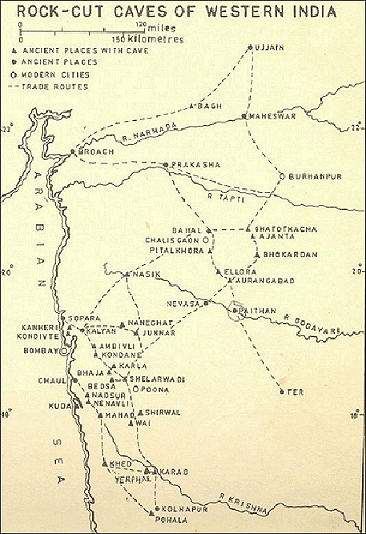
(Click to enlarge) |
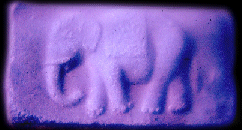 |
|
The goods coming into and going out of the Kingdom were marked with
seals. The elephant seal shown here, which was found at Paithan,
seems to be of a Buddhist trader, who used to stamp it on export
articles. It is rectangular burned clay seal belonging to 1st /2nd
Century AD. Such seals of different motifs are reported to be found
from number of Satavahana sites. It is interesting to note that
local people even today show a stone pot at Nangeghat (near Junnar,
Pune) that was said to be used for collection of coins collected as
taxes from the Merchants passing the ghat.
Although, actual rates of duty on various items of production and
export / import are not known, the rates are not suspected to be
varied much beyond those laid down by Chanakya. We, however
certainly learn about well - established administrative setup with
the Kings to look after the revenue.
|
|
|
The
Revenue Minister was called “Rajjuk”. He was responsible for fair and judicial collection of
taxes in the Kingdom. Farm produce, business, production and exports
and imports were taxable. An idea of the turnover can be had from
the fact that several wars were fought between Kshatraps and
Satavahanas over control of the key ports and trade centres. The
cultural and religious differences did not seem to have outlived the
economical and business rivalry since we find mention of marriages,
large donations to religious and social institutions.
It is mentioned in the
book ‘Satavahankalin Maharashtra’ by Dr. R.S. Morwanchikar, a
renowned authority on the subject, that ‘the trade between Rome and
India was so favourable for India that a contemporary Roman writer
Plinny the Elder was worried about the extravagance of the Romans on imports. He
estimated that around 50 Million ‘sesterces’ (roman coins), equivalent to
roughly 800,000 Pounds, were going to India per year. Roman politicians
are on record to be worried by the outflow of money to pamper Roman
wives. It was a fashion among Romans to use Indian spices in their
Kitchen. Indian silk with rich zari work (gold embroidery) was popular
among the rich Roman brides. Suitable measures were taken by the Roman
authorities to curb imports to save the foreign exchange. India had
established monopoly in the Silk and spice trade. As a result there was
overall prosperity throughout the kingdom. There was cultural give and
take due to these interactions. |
|
The story of Roman
trade with India is associated with the rise and fall of the Roman
Empire. On the other hand, the rise and fall of Satavahan dynasty can be
linked with the rise and fall in the Roman Trade. Around 150 BC northern
Arabic traders were using strings of camels and donkeys and established
great caravan routes called Incense Route.
Arabian frankincense were
traded for spices from Indian subcontinents and sold to Greco-Roman
world. Romans had to depend on caravan route going through Anatolia and
Persia. The route was long and dangerous and also passing through
non-friendly nations.
The sea route was pioneered by Axumite
kingdom, but soon learned and used to great advantage by Romans.
Advantages of Monsoon winds for sea-fare was discovered in 45-46AD by a
Greek sailor, Hippolas. Earlier sailors preferred to sail close to the
shore and landing at nightfall. Hippolas used monsoon winds (south-westerlies)
for faster and direct access to India in summer season and return in
winters with North-easterlies. This short route came to be known as the
‘Spice route’. Till the times of Emperor Augustus around 120 ships per year
sailed to India.
The ships would arrive in Indian Ports in around August
to October months and would leave in October to February period. The
business through these trade link flourished so much that there is
mention of a delegation sent by Satavahan King Pulumavi, having his
Capital at Paithan to congratulate Roman Emperor Augustus on his
coronation.
|

 |
|

(Click to enlarge)
Courtesy : www.wikipedia.org |
|
Roman traders visited southern India i.e.
present day Maharashtra, Andhra, Karnataka, Kerala regions. There are
stone inscriptions mentioning donations by Greek traders in Caves of
Western region. Many of the traders settled permanently in India. The
excavations at Ter (mentioned as Tagara in above map)- has shown signs of large Greco-Roman settlements.
Greek geographer and astronomer, Ptolemy (200 AD) has referred to it as
an important trading town. ‘Periplus of the Erythraean Sea’ (Periplus, a
Latin word coming from ancient Greek, means sailing around) is a first
century AD travelogue.
Some 23,852 artifacts painstakingly collected by Shri. Ramlingappa Lamture a local merchant of
Ter, stand witness to the
mute fact of the importance Ter achieved in the field of contemporary
trade and commerce of the period. The Periplus mentions details of
exported and imported items from Indian ports like Bharoch, Kalyan,
Sopara among others. |
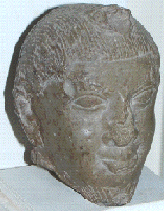 1 1 |
|
It mentions silk, cotton cloths, fine muslin, figured linens,
agate, precious stones, jewelry, ivory, black pepper, spices, butter,
ghee, honey, indigo and sandal as items exported from the port. While
Italian Copper, zinc, glass, topaz, coral, storax, frankincense, vessels
of glass, silver and gold plates, wines, and
|
|
cosmetic materials etc were imported.
There was a quite advanced bead making industry. Some type of chemical
etching work required to be done on beads to embellish them.
The bead making forms a bridge between
very ancient Sumerian and Indian culture. Terracotta statues and Earthen
Ware : Large amount of earthenware like pots, dishes, glasses, amphoraes,
idols, dolls and sculptures are found in excavations at Paithan and Ter.
Stone die of a roman woman figure is found at Paithan. |
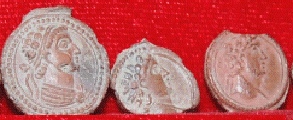 2
2 |
|
|
|
Coins found in Ter area are another
indicators of technological give and take of the Satavahan period. The
coins are of Roman Kings. The influence of design of the roman coin of
King Augustus is clearly visible on the Indian coin of the same period,
like Nahapa Kshatrap. |
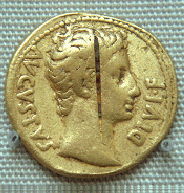 7
7
Emperor Augustus found at Pudukottai
India |
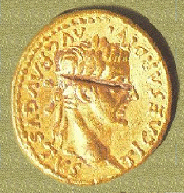 8
8
Tiberius |
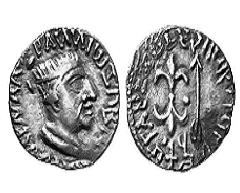 9
9
Indian king Kshatrap |
|
|
|
Recently, according to news-reports iron
smelting site belonging to Satavahan period was found in Haglure
village, on Solapur-Tuljapure road. The place has iron slags and
vestiges of iron smelting activities. Large scale red polished ware
indicate mass occurrence of production and trade. There are signs of
Roman settlement near Ter. There are inscriptions in the Naneghat Caves
(near Junnar) indicating donations were received from the Roman Traders
for its construction. These finds do underline the fact that India has
been on the Trade Map of the world from the time immemorial and also it
had a well-established tax system in place. |
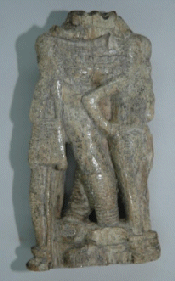 |
|
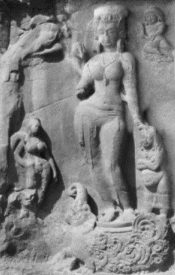 |
|
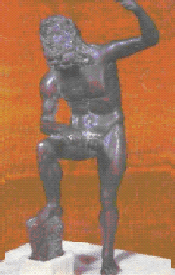 |
|
Ivory doll fouund at Bhokardhan |
|
River Goddess at Ellora |
|
Poseidon Roman Sea-God at Kolhapur |
|
An
Indian Ivory having distinct features
of an Indian woman is found at
Pompeii, Italy. It is in the museum of
Naples Archaeological Museum.
Its Indian origin and carving is supported by a find of a similar ivory
figurine at Bhokardhan excavations near Aurangabad. The abundance of
ivory objects both finished and unfinished indicate that Bhogvardhana as
it was called in those days, must be the ivory making centre in the
Satavahana period. Though the ivory figurine is incomplete, it is of
considerable interest as it pre-dates similar figurine at Pompeii.
|
|
Indian ivory is also found in
Begram, Afghanistan.
The web site of Electronic Cultural Atlas Initiative (http://ecai.org) has some beautiful information and pictures on the
subject. The National Museum, Kabul has quite a few ivory figurines of
Indian river goddess Ganga. The
beautiful Goddess is shown standing on a Makara.
(A mythical composite beast consisting of part of a crocodile,
elephant and fish). And yes, it should surprise no one, to find the
same figure depicted with all the grace and splendor at
Cave No.21 of Ellora, Aurangabad. In fact the exquisite beauty of the carving makes it, one of
the master pieces of the Caves. This Ellora sculpture (6-7AD) is of much
later date than the Begram ivories; still it is sufficient for showing
the origins of the workmanship due to the use of its Indian symbolisms.
|
|
The influence of the cultural exchange
between the trading partners was mutual. As the Indian art was
appreciated abroad, so was the Western art and technical craftsmanship
prized here. We find coins, grinding wheel, lamps, vessels, pottery of
distinct western techniques in vogue here. A handsome sculptor of
Poseidon Roman Sea-God is found at Kolhapur. |
|
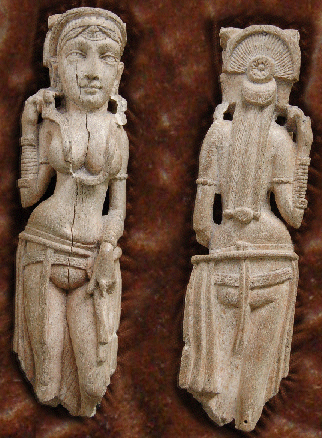 10
10 |
Perhaps the most remarkable symbol of the
trade and cultural exchange between the Indian and the Western World is
the Ivory figurine found at Ter, Osmanabad. The maiden
is beautiful, well-proportioned lady with a lot of jewelry. Her blue
eyes markedly represent western aesthetics. The figurine can be dated
between 150-170 AD.
In essence, the picture that emerges
significantly of the period is that many of the Greek, Roman traders who
came to India, afterwards, got settled in the country. They did fight
wars for supremacy in trading and revenue interests. But, they also
adopted the Indian languages, culture and religion. Eventually, they
became one with the social fabric of the era. Inscriptions regarding
donations for excavating caves, building water tanks on the trade route,
donations for Hindu - Buddhist monks, building temples and monasteries,
stories about marriage relations and religious conversions, all denote
exchange of cultures. We can compare it with the collision of celestial
galaxies, extremely violent at some parts to peaceful reorganizations at
some other.
The archeological relics that we find in and around Marathwada area are remnant of this union of different social
structures, denoting violent history at some parts to cunningly
political, diplomatic, loving and peaceful period at others. The role of
the massive force of the gravity was played without doubt by the trade
and revenue in bringing the different societies together. The result of
this amalgamation is the unique culture of India that we see today with
its characteristic unity in diversity. |
|
Ivory figurine found at Ter |
|
|
|
|
Some interesting photographs of artifacts
used in the roman trade from Museum at Ter, Dist. Osmanabad, Maharashtra
are shown to emphasize the facts. |
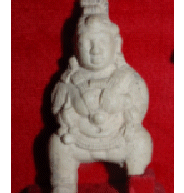 11 11 |
|
 12 12 |
|
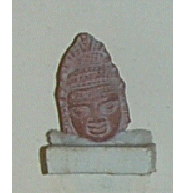 13 13 |
|
Mythological Female
Figurine |
|
Playing Dice |
|
Toy |
 14 14 |
|
 15 15 |
|
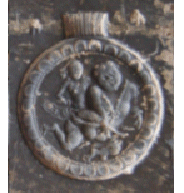 16 16 |
|
Roman Hand Grinder |
|
Pendent |
|
Stone Die for
Pendents |
|
By S. R. Rajurkar , Supdt., Central
Excise.
|
|
SOURCE : |
1. "Satavahan Kalin Maharashtra" by Dr. R.S.
Morwanchikar, Pratima Prakashan, Pune, First Edition 1993 & Second
Edition 2009.
2. "Kautiliya Arthashastra" by Arya Chanakya, Translated in Marathi by
Late B.R. Hiwargaonkar, re-written by H.A.Bhave fourth edition Sept
2002.
3. Personal collection of artifacts with Shri. Revansiddha Lamture, Ter,
Dist Osmanabad. (No. 3,6,10,15,16)
4. Artifacts in Late Shri. Ramlingappa Lamture, Government Museum at Ter
Dist. Osmanabad. (No. 1,2,4,5,11,12,13,14)
5. From Wikipedia, the free encyclopedia www.wikipedia.org particularly,
http://en.wikipedia.org/wiki/Roman_trade_with_India
6. A site about Celtic gods, Celtic tribes, recipes, legends and folk
tales and translations of the Ancient Welsh texts on
http://www.celtnet.org.uk/
particularly the page
http://www.celtnet.org.uk/recipes/spice_trade.php
7. ‘Maharashtra’ edited and compiled by Dr. Saryu Doshi, by Marg
Publications 1985 and particularly articles and photographs contained in
the articles
A) ‘Antiquity’ by M.K. Dhavalikar,
B) ‘Metal Images’ by S. Gorakshakar,
C) ‘Coins’ by B.V. Shetti,
D) ‘Textiles’ by R.S.Morwanchikar,
E) ‘Rock Cut Temples’ by Karl Khandalawala.
8. News Paper Article dated Jan 14, 2009, in Indian Express, Pune
Edition, dated 15.1.2009 by Bakhtiyar Tangsal and Article by Vinita
Deshmukh dated Sept 24, 2008 in the same news paper. |
Acknowledgement : This article
would not have been possible without extensive and generous help of Dr.
R.S.Morwanchikar, former HOD of History Department in Dr. Babasaheb
Ambedkar
Marathwada University, Aurangabad and an internationally acclaimed
authority on the subject. The writer is grateful to Shri. Revansiddha
Lamture (grand son of Late Shri. Ramlingappa Lamture) for allowing
access to the rare and precious artifacts in his personal possession.
The permission given by Shri. B.S.Gajbhiye, Director, Directorate of
Archeology and Museums, Maharashtra State, Mumbai, to photograph and to
use photos of the artifacts in the Government owned Museums particularly
the Late Ramlingappa Lamture Museum, Ter is highly appreciated. The
credit & copyrights of the ivory figurine found at Bhokardan rests
with Dr. Babasaheb Ambedkar Marathwada University, Aurangabad and author
is indebted for permitting to use the same here. The encouragement to
take up the subject and the wholehearted support received from Shri.
Arun Sahu, Commissioner, Aurangabad for the article is also deeply
acknowledged.
Copyrights : All care has been taken to contact the original
sources for permissions for web publishing of the copy righted material
wherever possible. The quotes, photographs, maps and pictures used in
the article are property of their original sources mentioned above.
Anyone wanting to reuse them need to take appropriate precaution to take
permission or comply restrictions / conditions of the original source.
Disclaimer: The
responsibility of authenticity and accuracy of the information contained
in the above article lies fully with the author of the article and not
with the Central Excise Department and Webmaster.
|
| |
|
|
|



 1
1 2
2


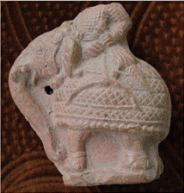 3
3 4
4 5
5 6
6 7
7 8
8 9
9


 10
10 11
11 12
12 13
13 14
14 15
15 16
16